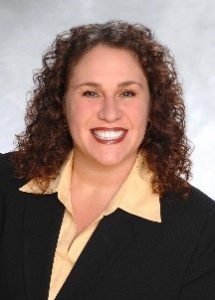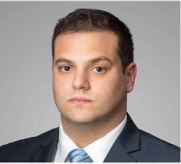CALIFORNIA RE-ENACTS (AND EXPANDS) MANDATORY COVID-19 SUPPLEMENTAL PAID SICK LEAVE
By Martin Vigodnier, Esq. and Jaimee K. Wellerstein, Esq., Bradley & Gmelich, CALSAGA Legal Advisor
On March 19, 2021, Governor Gavin Newsom signed SB 95 into law, once again providing COVID-19 related supplemental paid sick leave to California workers. Employers will recall that 2020 mandatory COVID-19 paid sick leave – both federal Families First Coronavirus Response Act (FFCRA) and California Supplemental Paid Sick Leave (SPSL) expired on December 31, 2020.
SB 95 now requires any California employer with more than 25 employees to provide SPSL for COVID-19 related reasons in addition to regular paid sick leave offered. The new law also authorizes SPSL for providers of in-home supportive services and waiver personal care services.
START DATE & RETROACTIVITY
The new law took effect on March 29, 2021 and remains in effect through September 30, 2021. However, SB 95 is retroactive to January 1, 2021. Thus, any leave granted since January 1st for any of the qualifying reasons (discussed below) would require reimbursement.
QUALIFYING REASONS FOR LEAVE
The qualifying reasons for leave have been expanded for 2021. Employees who are unable to work or telework can use SPSL for the following reasons, which are more numerous than they were in 2020:
- Employee is subject to a quarantine or isolation period related to COVID-19 as defined by federal, state, or local orders or guidelines.
- Employee is advised by a health care provider to self-quarantine due to concerns related to COVID-19.
- Employee is attending an appointment to receive a COVID-19 vaccine.
- Employee is experiencing symptoms related to a COVID-19 vaccine that prevent the employee from being able to work or telework.
- Employee is experiencing COVID-19 symptoms and seeking a medical diagnosis.
- Employee is caring for a family member who is subject to a quarantine or isolation order or guideline or who has been advised to self-quarantine by a health care provider due to concerns related to COVID-19.
- Employee is caring for a child whose school or place of care is closed or otherwise unavailable for reasons related to COVID-19 on the premises.
AMOUNT OF LEAVE AVAILABLE
- Full-Time Employees: Employees receive 80 hours if either their employer considers them to work full time or, on average, they worked or were scheduled to work at least 40 hours per week in the two weeks preceding the leave.
- Part-Time Employees: Employees with a normal weekly schedule receive the total number of hours they are normally scheduled to work over two weeks. Employees who work a variable schedule and have worked six months or more will receive 14 times the average number of hours they worked each day in the six months preceding their leave date. (For example, the total number of hours worked in last six months divided by 182 days equals the daily hours; then multiply the daily hours by 14 for the total hours entitlement). If the employee worked only between 15 days and six months, the same calculation would be used, but over their entire period of employment. Employees who worked 14 days or fewer receive leave hours equal to their total number of hours worked.
RATE OF PAY & CAP
The 2021 SPSL pay rate calculation mandates that non-exempt employees receive the highest of the following (subject to the cap, below):
- The employee’s regular rate of pay for the workweek in which the leave is taken;
- A rate calculated by dividing the employee’s total wages, not including overtime premium pay, by the employee’s total hours worked in the full pay periods of the prior 90 days of employment; or
- The state or local (whichever is applicable) minimum wage.
Note that for exempt employees, SPSL is calculated in the same way that the employer calculates wages for other forms of paid leave.
The 2021 SPSL is capped. The most an employee can receive for 2021 SPSL is $511 per day or $5,110 in the aggregate.
CERTIFICATION OF LEAVE
An employee is entitled to SPSL immediately upon their oral or written request. Moreover, an employer cannot require medical certification in order to provide the paid leave. However, bear in mind that it may be reasonable in some circumstances to request documentation where the employer has information indicating that the employee is not requesting SPSL for a legitimate purpose.
NOTICE, POSTING & PAYSTUB REQUIREMENTS:
A notice of employee SPSL rights must be posted at the workplace, or sent via email if employees work from home. A link to the notice required (available through the Labor Commissioner’s Office) is available here.
Like in 2020, California requires information concerning employees’ SPSL benefits be available on employee paystubs. Importantly, the 2021 law requires that SPSL and non-COVID statutory paid sick leave be displayed separately.
For part-time, variable-scheduled employees, employers must calculate the initial amount of SPSL available as of the first printing of the paystubs and indicate “variable” next to the amount on the paystub. The employer would then do the actual calculation if/when the employee actually requests the leave.
Finally, any retroactive SPSL payment must be identified on an employee’s paystub for the pay period during which payment is made.
Have questions about 2021 Covid-19 Supplemental Paid Sick Leave or any other pressing employment law issues? Contact your attorneys at Bradley & Gmelich LLP. We are here to help.
 Jaimee K. Wellerstein is a Partner at Bradley & Gmelich LLP and the Head of the firm’s Employment Department. Jaimee concentrates her practice in representing employers in all aspects of employment law, including defense of wage and hour class actions, PAGA claims, discrimination, retaliation, harassment, wrongful discharge, misclassification, and other employment related lawsuits. She also provides employment counseling and training in all of these areas. The firm acts as general counsel for many security companies in California.
Jaimee K. Wellerstein is a Partner at Bradley & Gmelich LLP and the Head of the firm’s Employment Department. Jaimee concentrates her practice in representing employers in all aspects of employment law, including defense of wage and hour class actions, PAGA claims, discrimination, retaliation, harassment, wrongful discharge, misclassification, and other employment related lawsuits. She also provides employment counseling and training in all of these areas. The firm acts as general counsel for many security companies in California.
Jaimee routinely represents employers in federal and state courts and in arbitration proceedings throughout the state, as well as at administrative proceedings before the Equal Employment Opportunity Commission, the California Department of Labor Standards Enforcement, the United States Department of Labor, and other federal and state agencies. Jaimee assists as a Legal Advisor to CALSAGA, and is a member of ASIS International. She is rated AV-Preeminent by Martindale Hubbell, the highest peer rating available. jwellerstein@bglawyers.com / 818-243-5200.
Martin P. Vigodnier, Esq. is a Senior Associate in Bradley & Gmelich LLP’s Employment Law Department. Martin focuses his practice on labor and employment litigation, class actions, and Private Attorney General Act (PAGA) actions, including wage and hour claims, discrimination, leaves of absence, reasonable accommodation, defamation, trade secrets, retaliation, harassment, wrongful termination, breach of contract, and fraud. Martin also drafts, in both English and Spanish, contracts, regulatory compliance materials, agreements, and policies such as anti-harassment, discrimination, and retaliation policies, OSHA safety policies, employee reimbursement policies, employee stock purchase plans, independent contractor agreements, arbitration agreements, settlement agreements, cross-purchase buy sell agreements, and employee handbooks.
?Prior to joining the firm, Martin was President and Founder of his solo law practice handling various employment matters. Prior to practicing law, he was an extern for the Equal Employment Opportunity Commission (EEOC) and awarded the prestigious Peggy Browning Fellowship to work for the Federal Labor Relations Authority (FLRA), assisting the Office of General Counsel analyze unfair labor practice charges against government agencies.
Martin is a native Spanish speaker and writer, and a former amateur boxer.
- B.A., University of California, Los Angeles (UCLA)
- J.D., University of Illinois, College of Law
Bar Admission
State Bar of California


